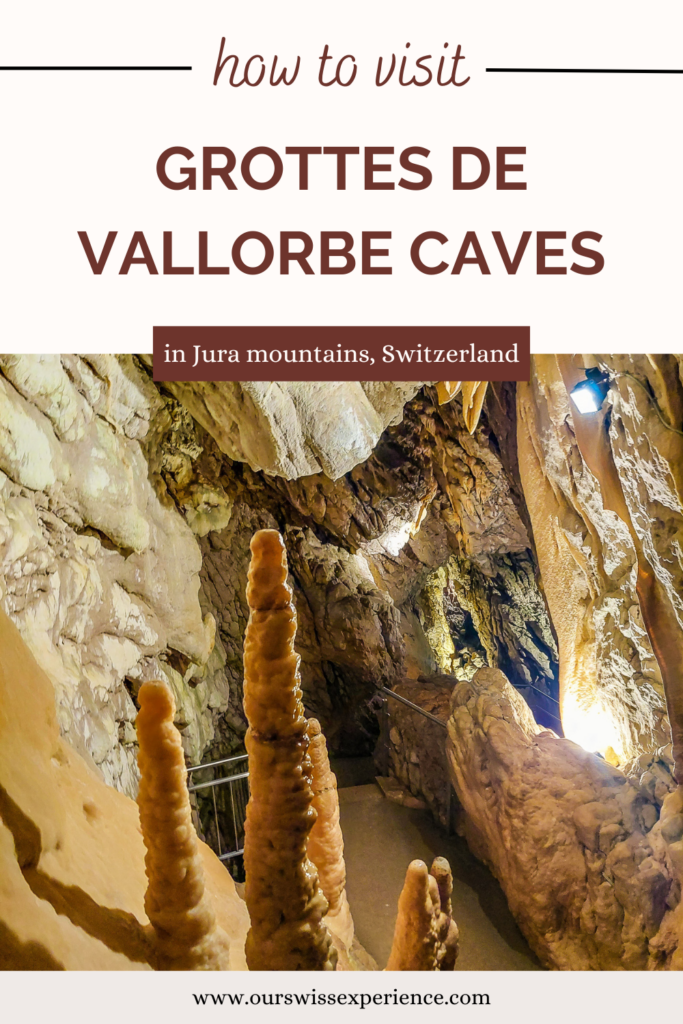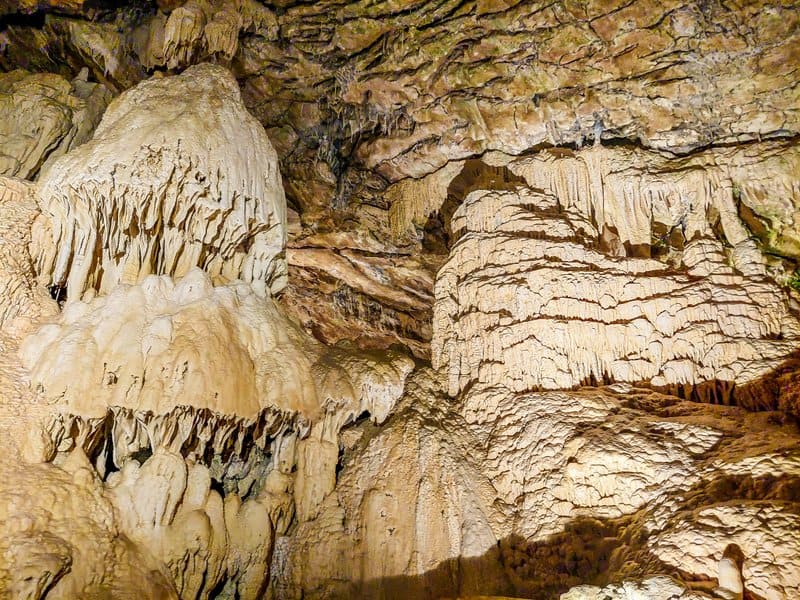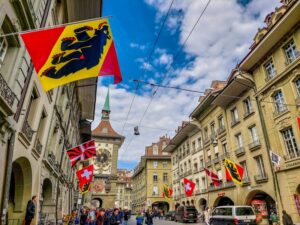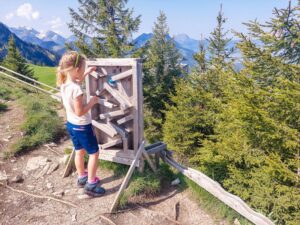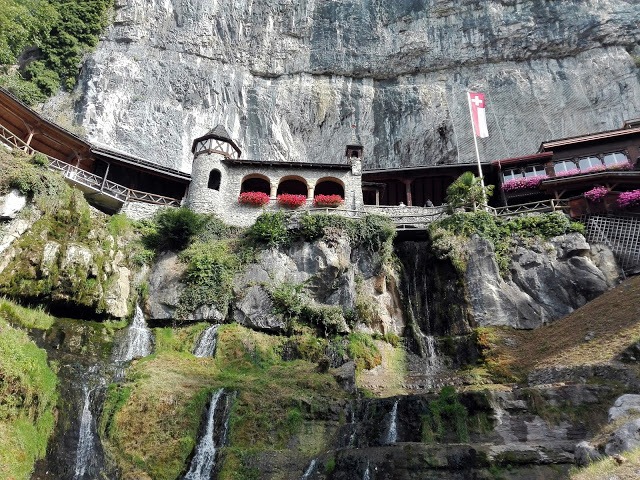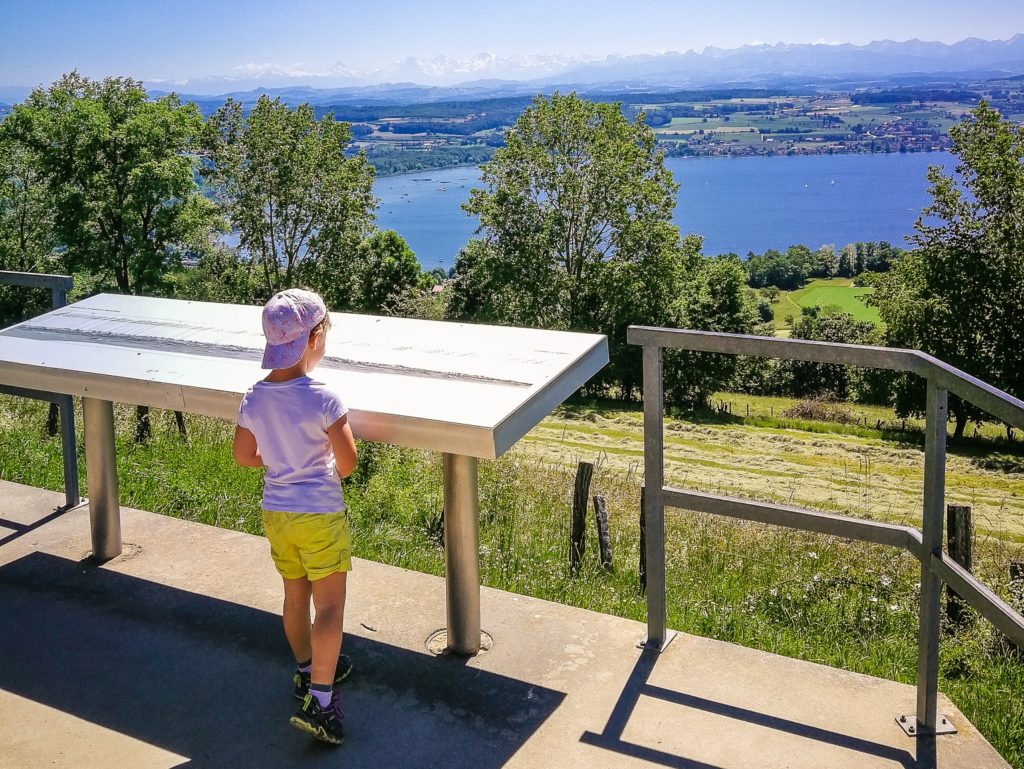Less than 6 kilometers from the Swiss-French border, the Grottes de Vallorbe caves are located in the Jura Mountains. The cave complex in typical karst relief was discovered by speleologists in 1961 and opened to the public in 1974. Since then, it has been a popular place for cave explorers and visitors to the Yverdon-Les-Bains region to see a natural wonder that was created over the last 7 million years or so.
Getting there
The caves are located at Chemin de la Résurgence 1, 1337 Vallorbe.
By car: the caves are about two kilometers from Vallorbe. From the highway (either from the direction of Lausanne or Bern) follow the signs to Vallorbe. In Vallorbe, a brown signpost will direct you to the caves. The car park is located near the hydroelectric power station. A short five-minute walk through the forest will take you to the entrance of the caves.
By public transport: Take the train to Le Day station, from here you can reach the Vallorbe caves by bus 613, which runs every hour directly to the Grottes stop.
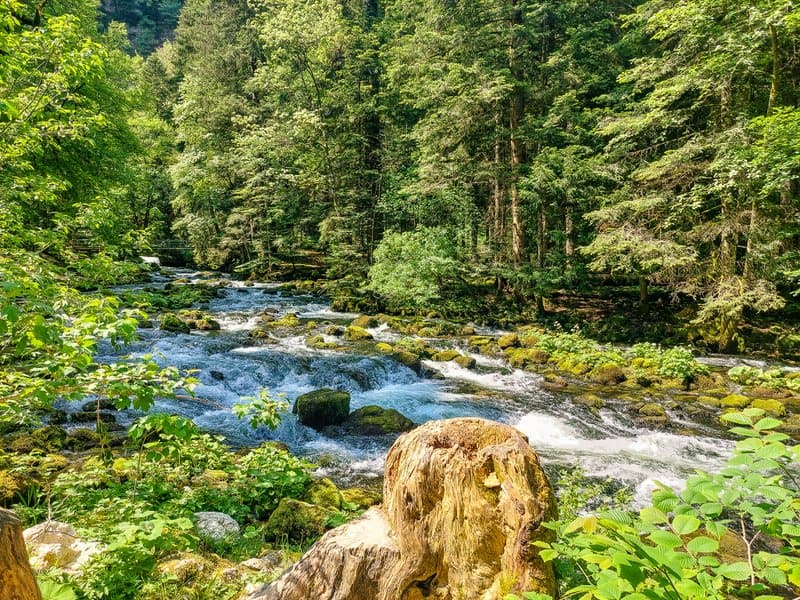
Opening hours and entrance fees
The caves are open every day from April to November:
April, May: 9.30 am to 4.30 pm (last entry); June, July, August: 9.30 am to 5.30 pm (last entry); September, October: 9.30 am to 4.30 pm; November: 1.30 pm to 4.30 pm.
Admission for an adult costs 16 CHF and for a child (6 to 15 years) 8 CHF. Family admission (2 adults + 2 children) is 44 CHF. We, as a family with three children, paid 50 CHF. Payments are of course possible by card, via Twint, and also in euros.
Visiting Grottes de Vallorbe caves
The karst caves of the Grottes de Vallorbe were excavated by the Orbe River, which disappears at the end of the nearby Lac de Joux and reappears 4.8 km further on in the form of a spring at Vallorbe. Before your tour, you can download a free app with an audio guide (in French, English, and German) that provides commentary on each of the stalactite formations and also offers the option of videos and virtual reality. Old-school fans can get paper guides, which are offered in nearly 30 languages! You will find some interesting additional information in it, such as what the individual formations are called (Citadel, Bison…), which pools you can put your hand in (and what maybe happens afterward), which rock formations to watch out for, and which hanging formations you might otherwise miss.
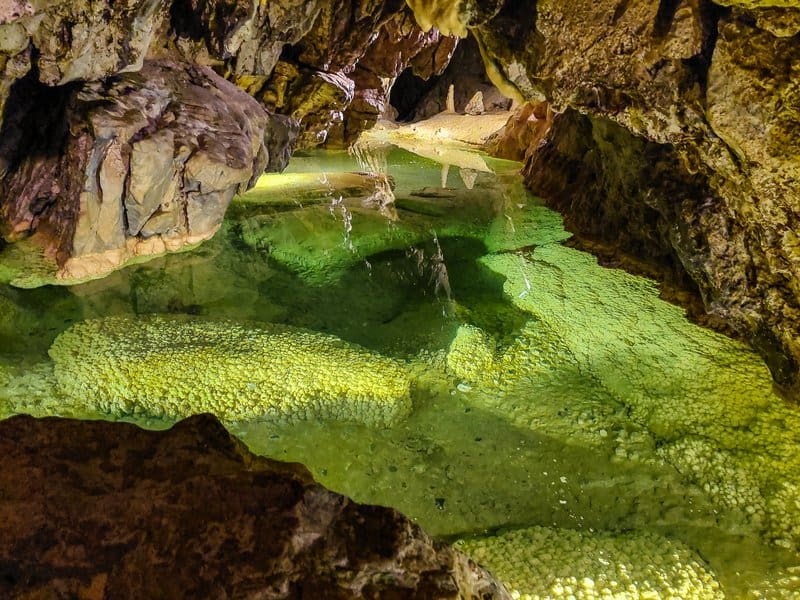
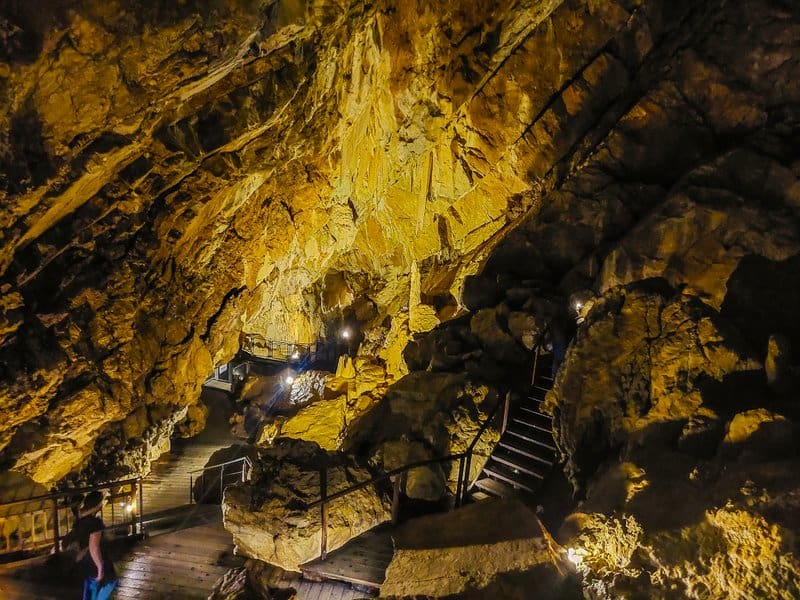
The caves are large and the walkways are on concrete, bridges, or stairs. The trail is well maintained and although the surface can be wet in some places, it is safe to walk on. The underground Orbe River thunders beneath your feet, with a flow of about 2 m3/s at low water, but can reach up to 80 m3/s at high water. The water temperature varies and depends on the inflow of the surface lakes and ranges between 4 and 13 °C. High overhead you have stalactites and stalagmites all around, with interesting formations illuminated along the way, or you can press flashing buttons yourself and beautiful lighting appears. A great highlight of the tour is the majestic “Cathedral”, where you’ll be treated to a short but very impressive light show accompanied by music.
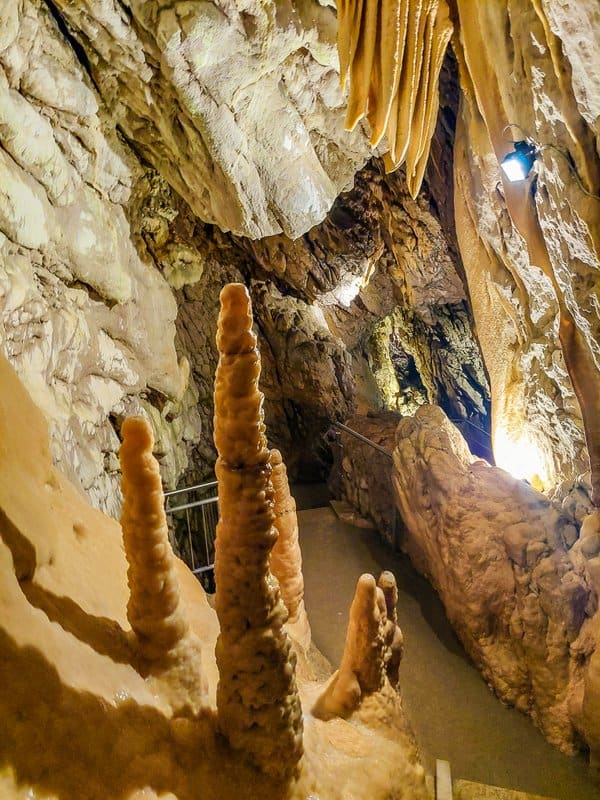
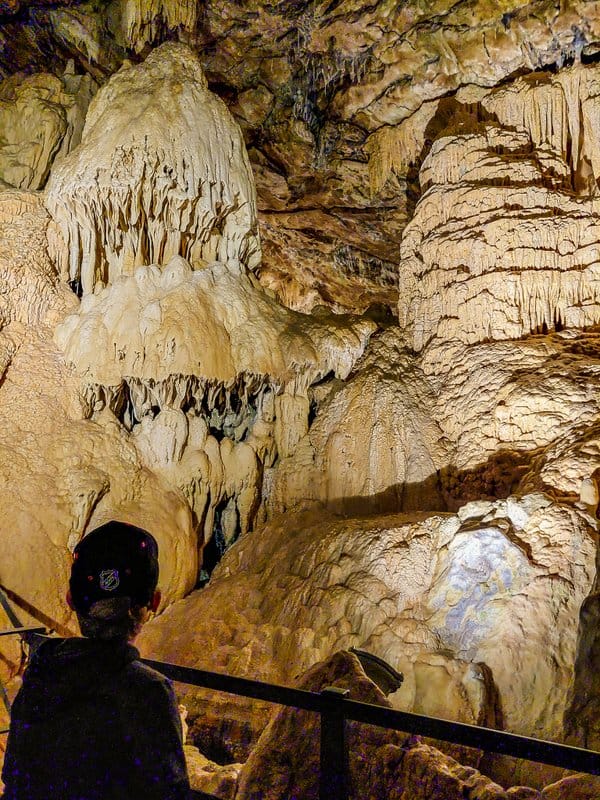
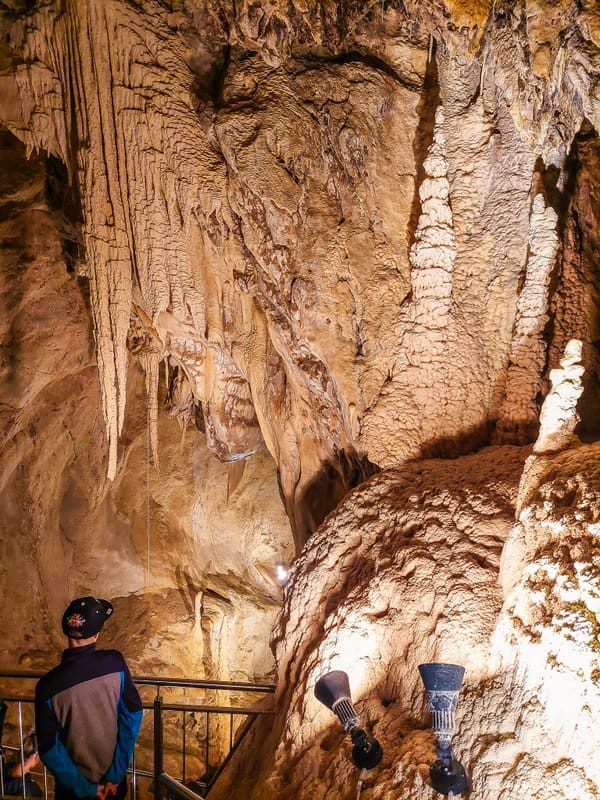
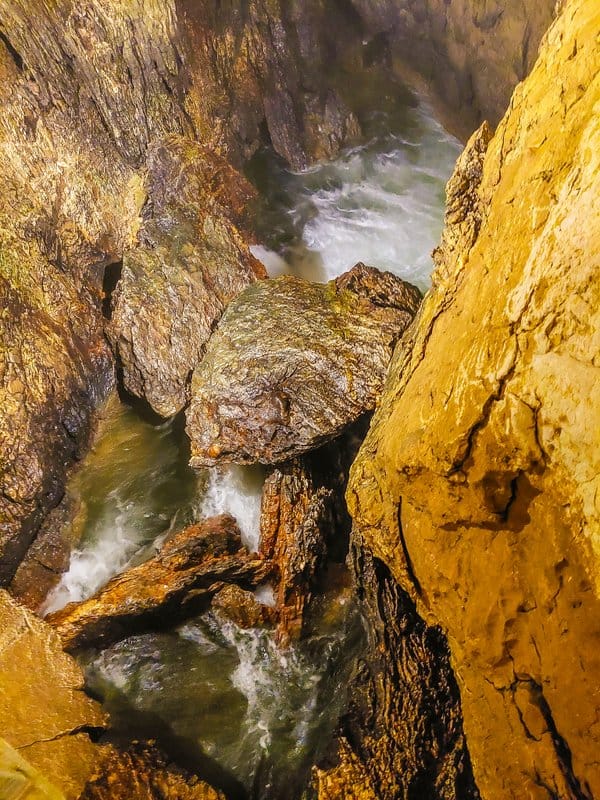
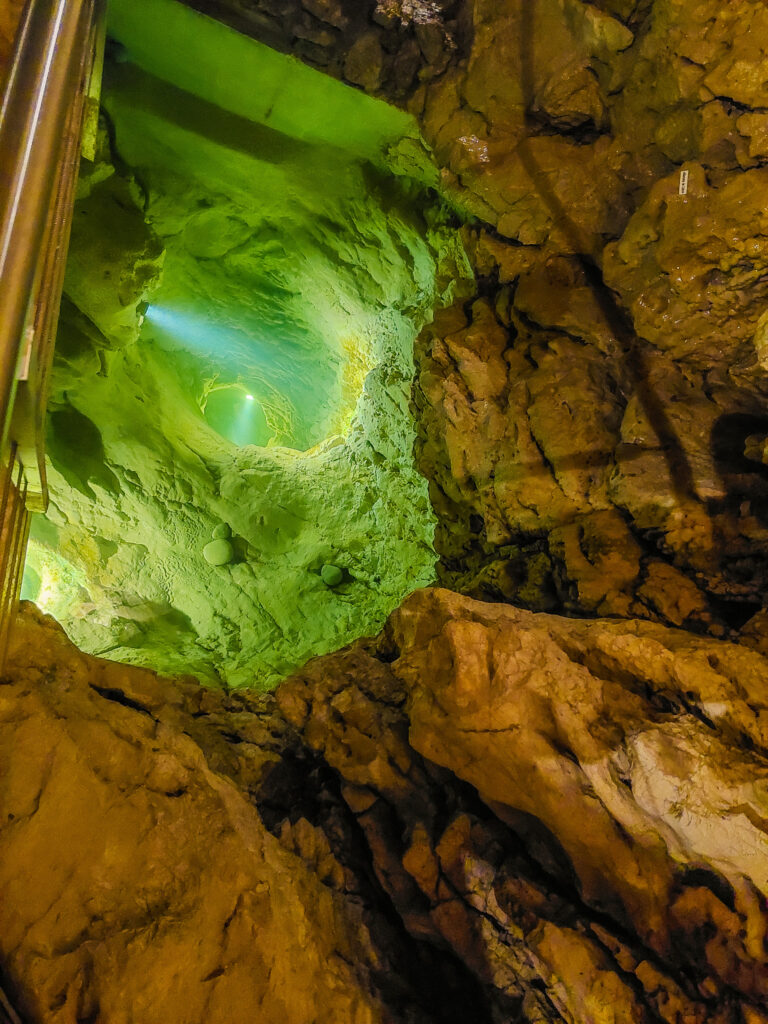
“Fairies’ Treasure”
Inside these caves, which are among the most beautiful in Europe, there is also the “Fairies’ Treasure” exhibition, where more than 250 mineral specimens from all over the world are displayed in four domed rooms carved into the rock.
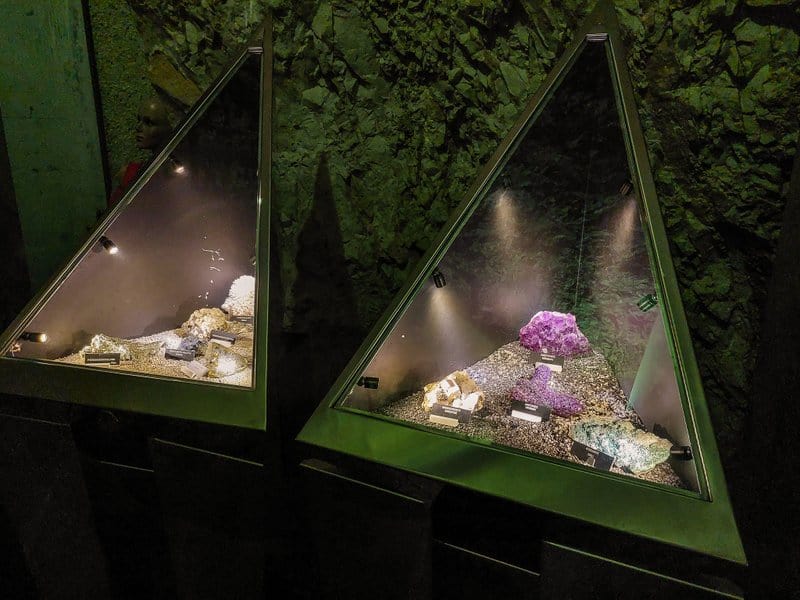
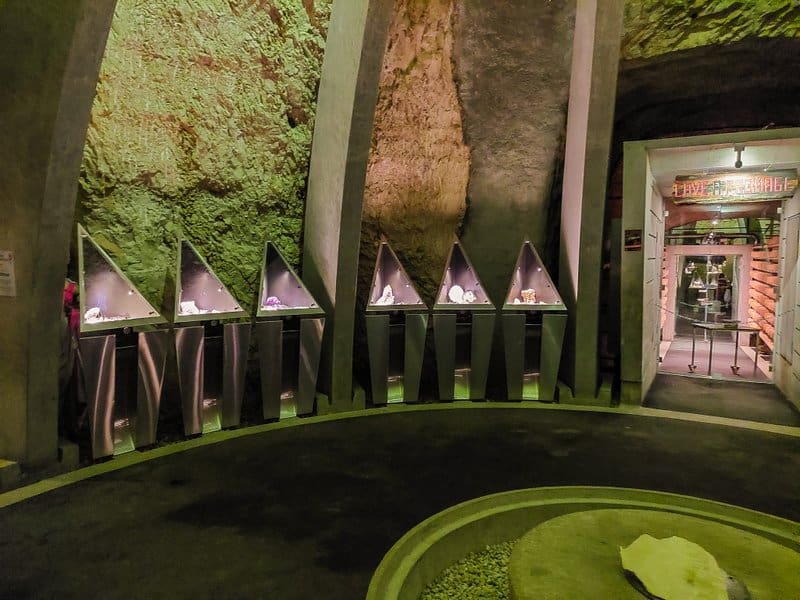
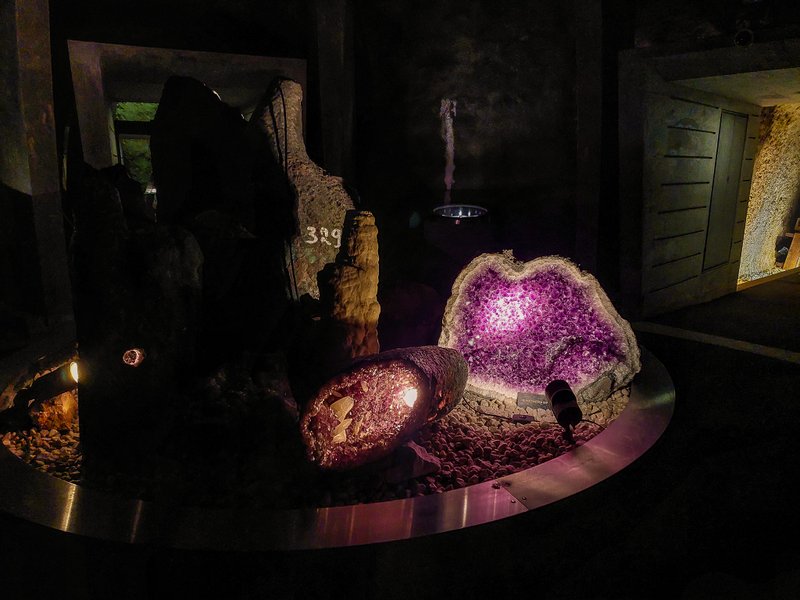
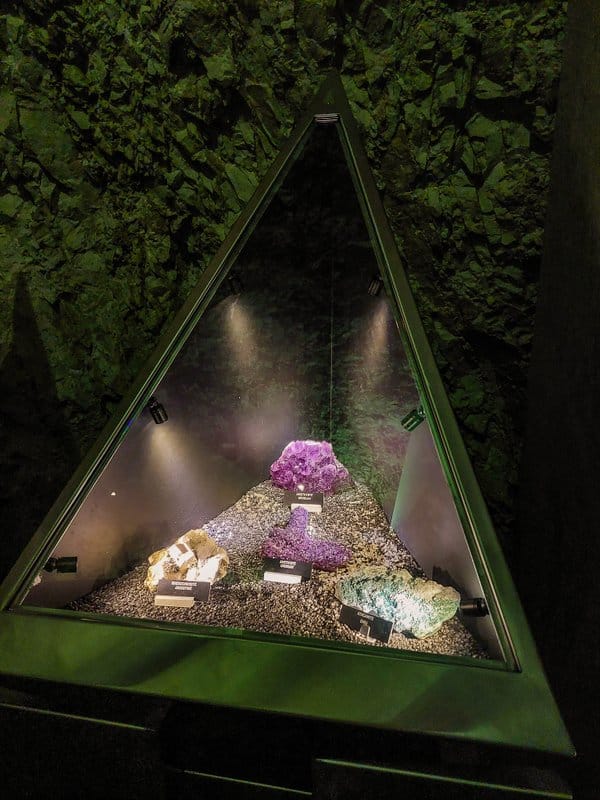
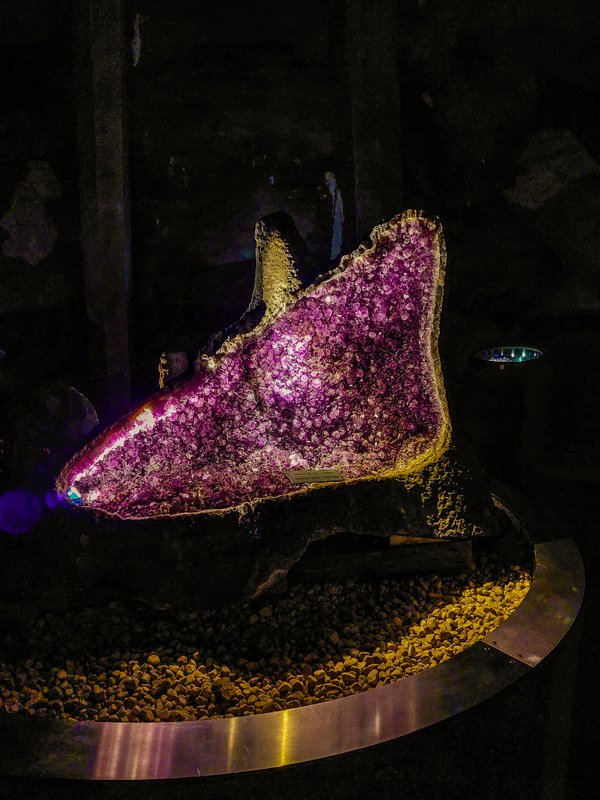
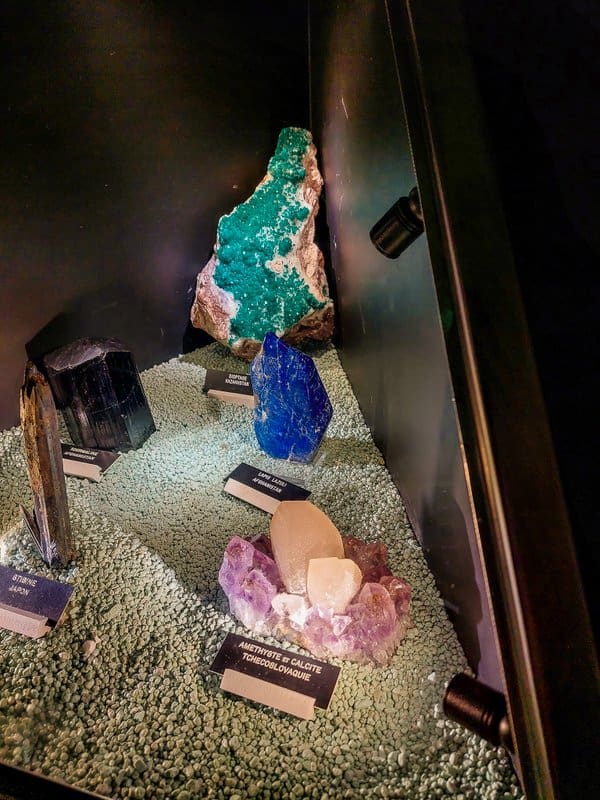
Shrnutí
- The tour of the caves takes about an hour.
- The tour route is not suitable for strollers due to the number of steps.
- The temperature in the caves is a stable 10 degrees all year round, so take at least a light jacket (in case of emergency you can rent one at the ticket office) and good non-slip shoes.
Where to go in the area – Grotte aux Fées
The Grotte aux Fées is located about 15 minutes from the caves. To reach it, cross the bridge over the Orbe River and follow the hiking trail through the forest uphill. Here, the bones of the cave bear, which lived in the Orbe Valley 30,000 years ago, have been found.
The cave of the same name is also located near the village of Saint-Maurice in the canton of Valais/Wallis
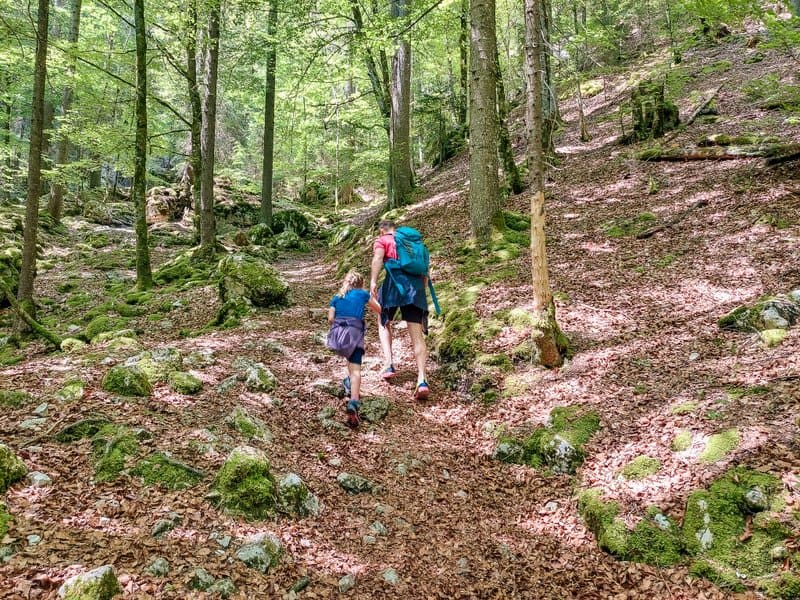
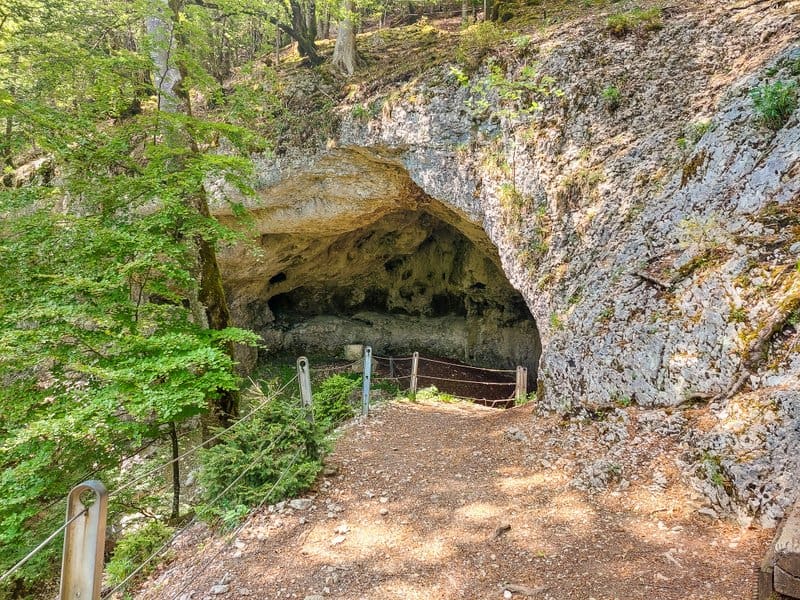
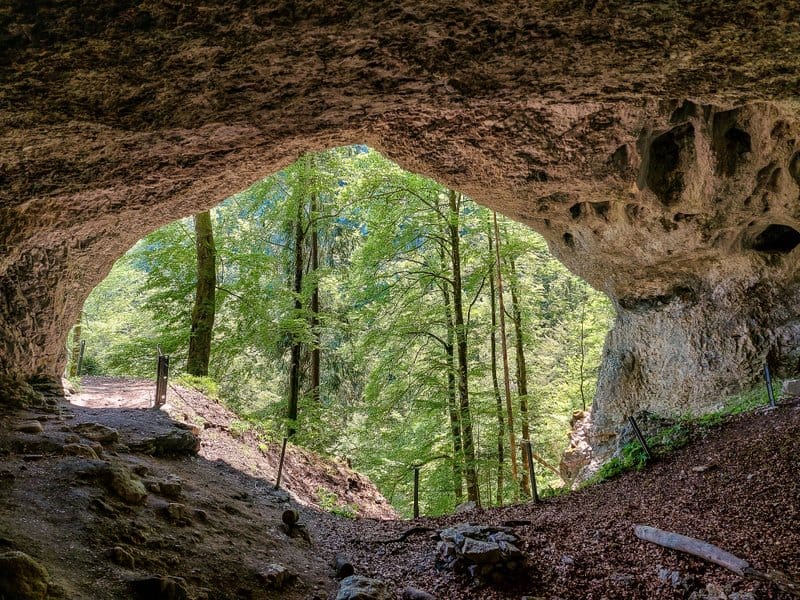
Save for later
